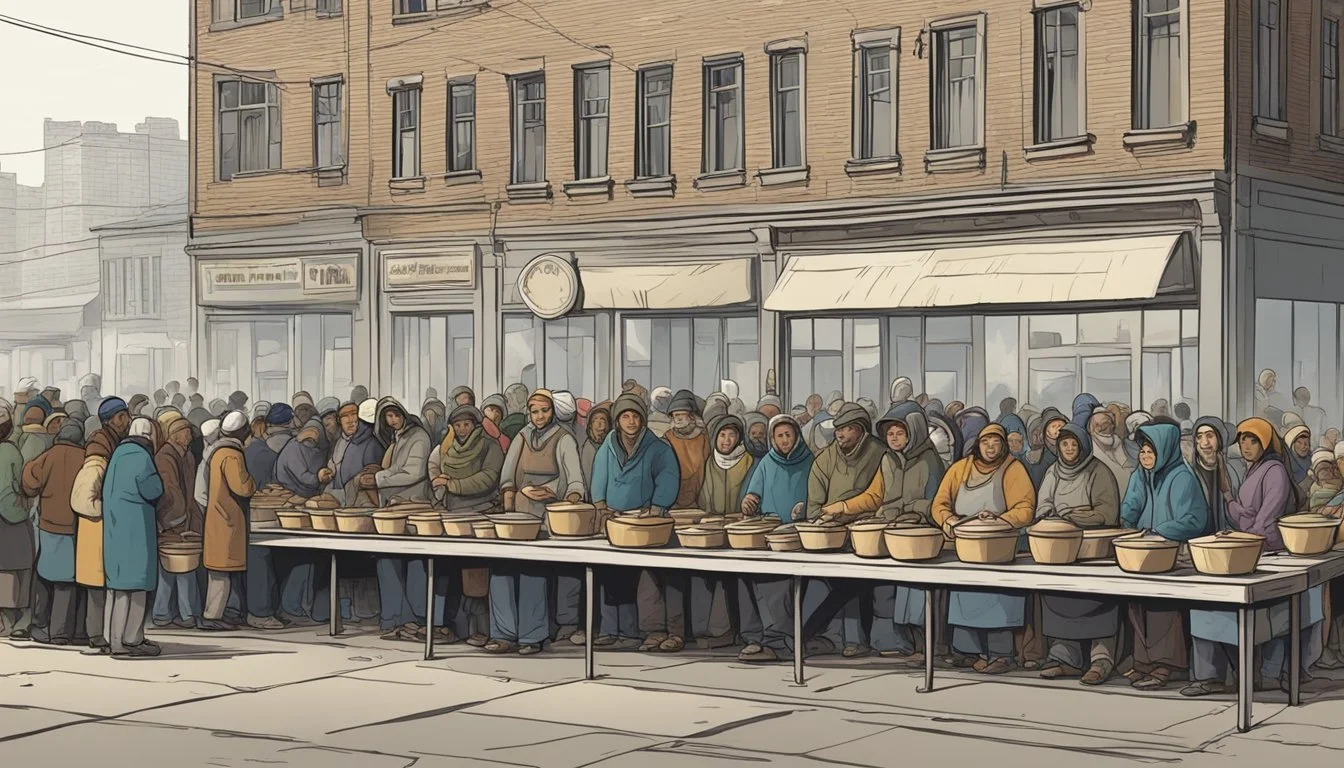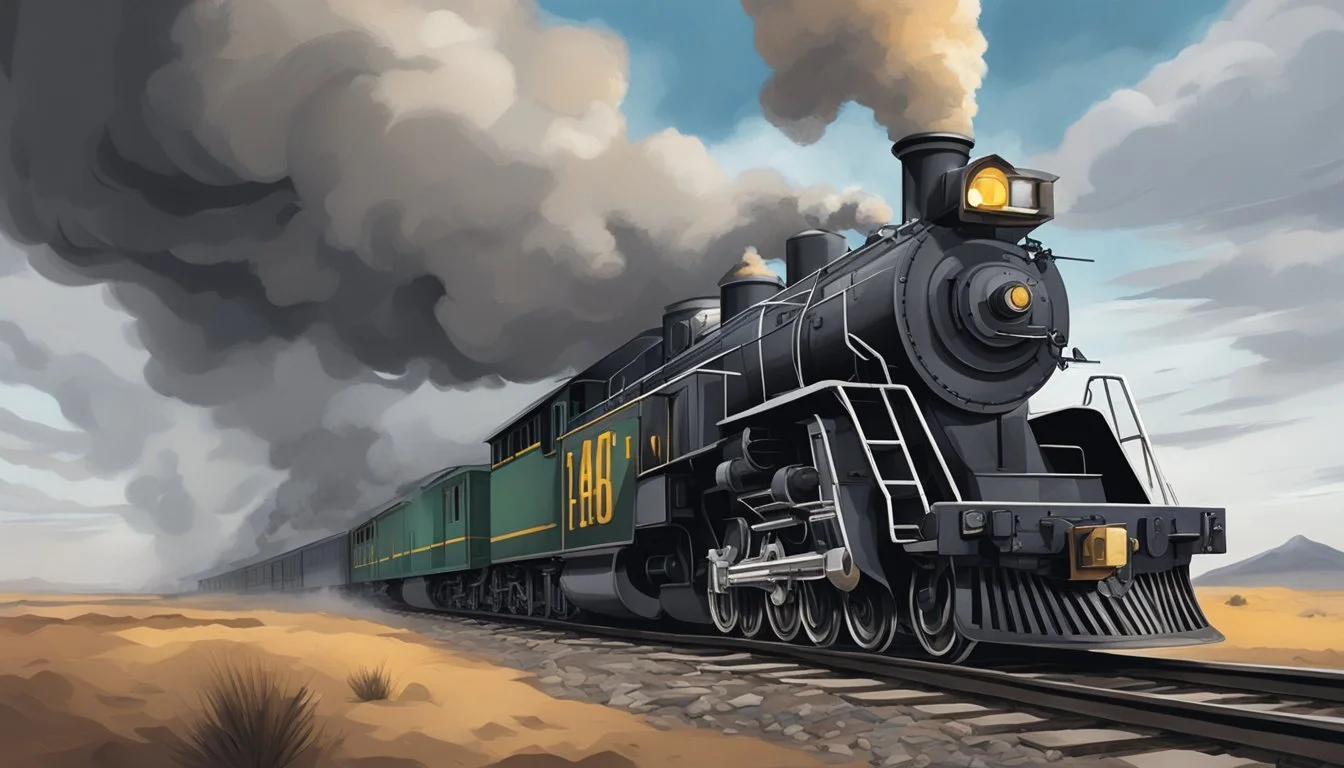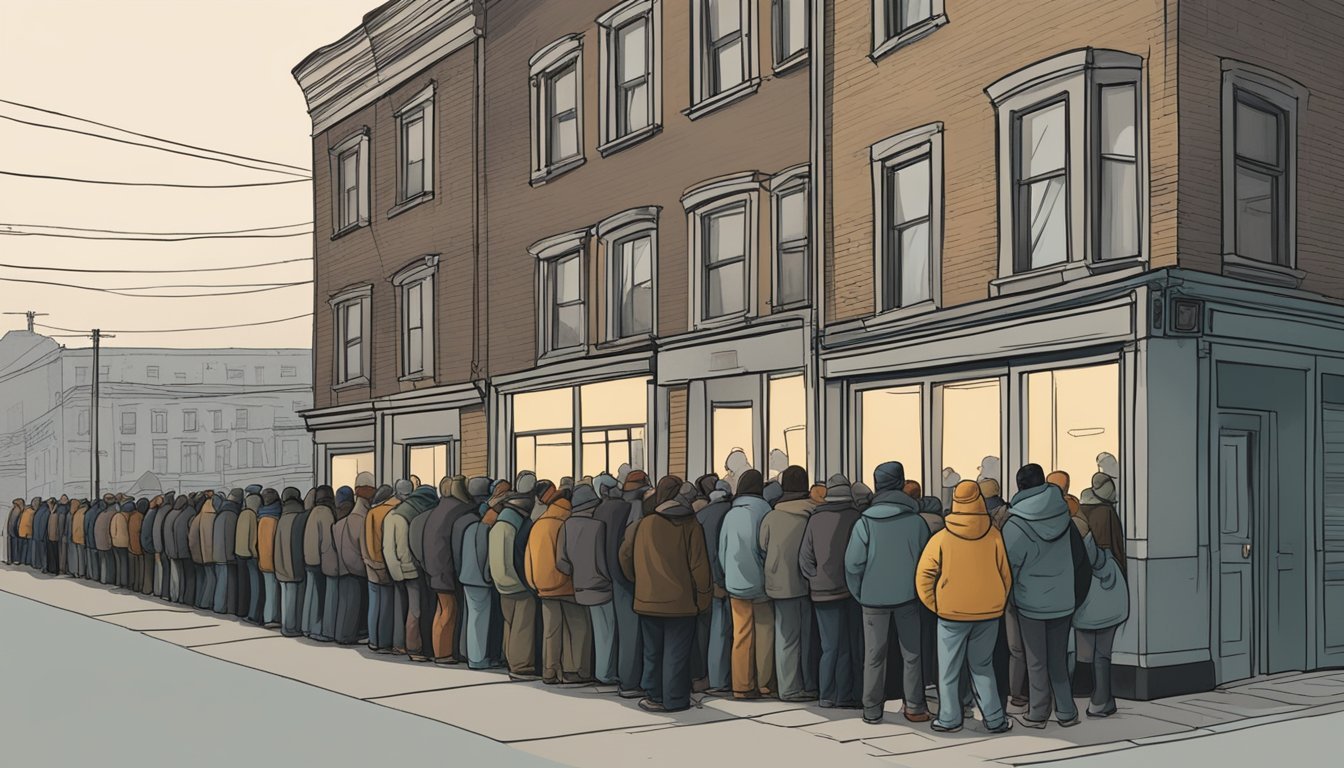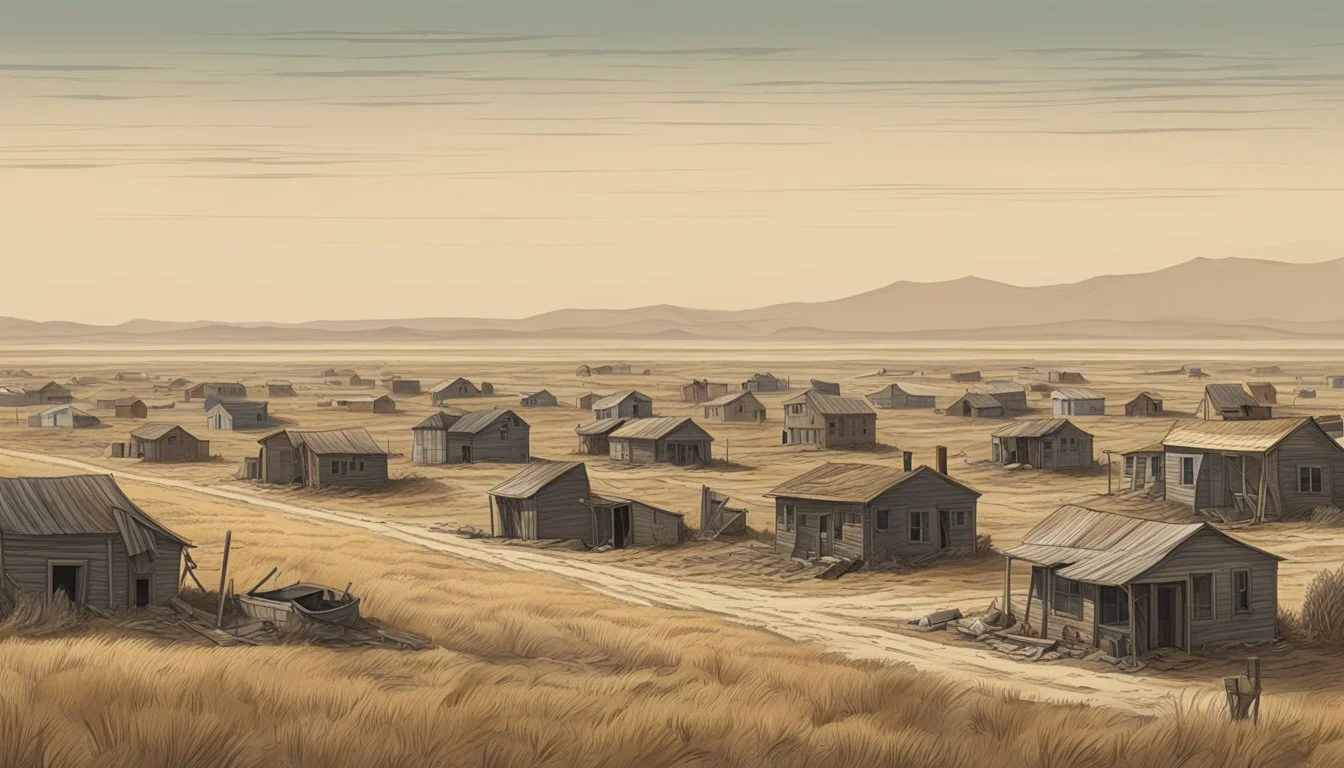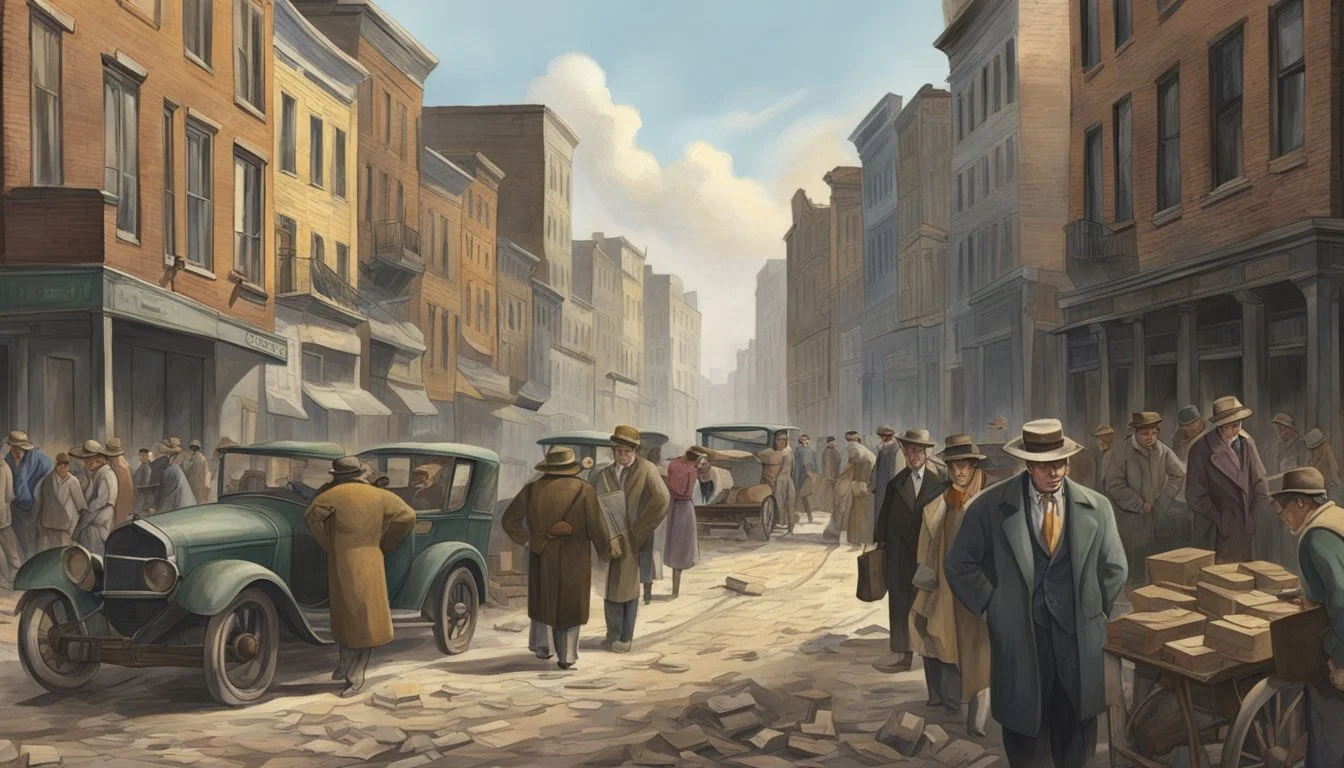9 Documentaries on the Great Depression and its Global Impact
Unveiling Economic Turmoil's Lasting Effects
The Great Depression was a pivotal period in world history that reshaped economies, societies, and political landscapes across the globe. This economic catastrophe began in the United States in 1929 and quickly spread, affecting nations far and wide. Documentaries about the Great Depression offer viewers a window into this tumultuous era, providing insights into its causes, consequences, and lasting impact.
These films serve as valuable educational resources, combining historical footage, expert analysis, and personal accounts to paint a comprehensive picture of the Depression years. They explore topics ranging from the stock market crash of 1929 to the implementation of New Deal policies, shedding light on the human experiences and economic forces that defined this challenging decade. Through these documentaries, audiences can gain a deeper understanding of how the Great Depression transformed the world and continues to influence modern economic thinking.
1) Ken Burns' 'The Dust Bowl'
Ken Burns' documentary "The Dust Bowl" explores one of the worst environmental disasters in American history. This two-part, four-hour film aired on PBS in November 2012.
The documentary chronicles the devastating drought and dust storms that ravaged the Great Plains during the 1930s. It examines the ecological and economic impact of this crisis on farming communities.
Burns' signature style combines archival footage, photographs, and interviews with survivors. The film features 26 firsthand accounts from those who lived through the Dust Bowl era.
"The Dust Bowl" places this environmental catastrophe in the context of the Great Depression. It illustrates how extreme weather patterns and unsustainable farming practices contributed to the disaster.
The documentary explores the human drama of families struggling to survive in harsh conditions. It depicts the resilience of those who faced crop failures, dust pneumonia, and economic hardship.
Burns' film also highlights the long-term consequences of the Dust Bowl. It examines how this event shaped agricultural practices and environmental policies in the United States.
2) 'The Great Depression' by PBS
PBS's documentary 'The Great Depression' offers a comprehensive look at one of America's most challenging periods. The film explores the economic collapse that began in 1929 and its far-reaching consequences.
Through archival footage and expert interviews, the documentary examines the causes of the stock market crash and subsequent economic downturn. It delves into the impact on everyday Americans, from unemployment to poverty and social unrest.
The film also covers President Franklin D. Roosevelt's New Deal programs and their role in addressing the crisis. It highlights how these initiatives reshaped American society and government.
'The Great Depression' provides insight into the global effects of the economic crisis. It examines how the downturn spread to other countries and influenced international relations.
The documentary brings to life personal stories of those who lived through the era. These firsthand accounts offer a human perspective on the hardships and resilience of the time.
3) 'American Experience: Riding the Rails'
This documentary explores the experiences of teenagers who rode freight trains during the Great Depression. Over 250,000 young people left their homes to travel across America by illegally hopping trains.
The film tells the stories of ten former teenage hobos, examining their motivations for leaving home and the challenges they faced on the rails. It provides insight into the harsh realities of life during the 1930s economic crisis.
'Riding the Rails' combines historical footage with personal accounts to paint a vivid picture of this unique aspect of Depression-era America. The documentary highlights the desperation that drove many young people to risk their lives riding atop moving freight cars.
The film also touches on the broader social and economic context of the time, including food shortages and widespread unemployment. It offers a glimpse into how the Great Depression reshaped American society and affected an entire generation.
Through its focus on young train-hoppers, 'Riding the Rails' presents a unique perspective on one of the most challenging periods in U.S. history. The documentary brings to life the experiences of those who sought adventure or escape during a time of national hardship.
4) 'The Crash of 1929' by American Experience
'The Crash of 1929' is a documentary produced by American Experience, a PBS series known for its in-depth historical explorations. The film examines the events leading up to the stock market crash on October 29, 1929, which triggered the Great Depression.
The documentary captures the unbridled optimism of the Jazz Age and contrasts it with the harsh reality that followed. It portrays the shocking consequences when the economic bubble burst, plunging the nation into financial turmoil.
Through archival footage and expert interviews, the film provides insights into the factors that contributed to the crash. It explores the widespread speculation, easy credit, and overvaluation of stocks that characterized the late 1920s.
'The Crash of 1929' also delves into the human stories behind the economic catastrophe. It presents personal accounts of investors, bankers, and ordinary citizens whose lives were upended by the financial collapse.
The documentary serves as a cautionary tale about the dangers of unchecked market exuberance. It draws parallels between the 1929 crash and modern economic challenges, offering valuable lessons for contemporary viewers.
5) 'Breadline: The Great Depression at Home'
'Breadline: The Great Depression at Home' is a documentary that explores the severe economic downturn in the United States during the 1930s. It forms part of the People's Century series, offering a comprehensive look at this pivotal period in American history.
The film uses a combination of archival footage and newly produced material to illustrate key events. It covers the stock market crash of 1929, which marked the beginning of the Great Depression.
President Franklin D. Roosevelt's New Deal policies are also examined in the documentary. These initiatives aimed to provide relief, recovery, and reform to the struggling nation.
'Breadline' captures the widespread hardship faced by Americans during this time. It portrays the realities of unemployment, poverty, and the struggle for basic necessities.
The documentary's title references the bread lines that became a symbol of the era. These were queues where people waited to receive free food, illustrating the desperation of many citizens.
By focusing on domestic impacts, 'Breadline' provides viewers with a personal perspective on the Great Depression. It helps audiences understand how this economic crisis affected everyday Americans.
6) 'When the World Breaks: The Depression's Impact'
'When the World Breaks' examines the creative response to the Great Depression of 1929. This documentary explores how people used art, music, literature, and entertainment as coping mechanisms during difficult times.
The film draws parallels between the Great Depression era and modern economic challenges. It features interviews with individuals who lived through the Depression, offering firsthand accounts of survival and resilience.
'When the World Breaks' highlights how adversity can spark innovation and resourcefulness. It showcases various forms of creativity that emerged during this period, including architecture, sports, and business ventures.
The documentary provides insight into how societal upheaval can lead to cultural shifts and artistic movements. It demonstrates the power of human creativity in the face of economic hardship.
By examining the Depression's impact on art and culture, the film offers a unique perspective on this pivotal historical period. It illustrates how creativity can serve as a means of survival and social commentary during times of crisis.
7) 'The Great Depression: A Global Phenomenon'
This documentary explores the far-reaching impacts of the Great Depression beyond the United States. It examines how the economic crisis spread to countries worldwide, affecting economies, societies, and political systems across continents.
The film highlights the interconnectedness of global markets in the 1920s and 1930s. It shows how the stock market crash in New York triggered a domino effect, leading to bank failures and economic downturns in Europe, Latin America, and Asia.
Interviews with international historians provide insights into how different nations responded to the crisis. The documentary covers the collapse of the gold standard, the rise of protectionist policies, and the global decline in trade and production.
Personal stories from individuals in various countries bring the human impact of the Depression to life. These narratives illustrate the universal experiences of unemployment, poverty, and social unrest during this period.
The film also explores how the Great Depression influenced political developments globally. It examines the rise of authoritarian regimes in some countries and the implementation of new economic policies in others.
8) 'The Ascent of Money' featuring Niall Ferguson
'The Ascent of Money' is a documentary series presented by historian Niall Ferguson. It explores the history and evolution of finance and its impact on global events, including the Great Depression.
Ferguson examines the roots of money and its development over time. He investigates the origins of credit, banking systems, and financial markets. The series demonstrates how these elements have shaped economies and societies throughout history.
One episode focuses on financial bubbles and crashes, providing context for understanding the Great Depression. Ferguson analyzes the factors that led to the 1929 stock market crash and its aftermath.
The documentary uses clear language to explain complex financial concepts. It makes economic history accessible to a general audience. Ferguson's presentation style combines historical facts with engaging storytelling.
'The Ascent of Money' offers valuable insights into the mechanisms behind financial crises. It draws parallels between past economic events and modern financial challenges. This perspective helps viewers understand the global impact of the Great Depression and its relevance to contemporary economics.
9) 'Hard Times: The Great Depression of 1932'
'Hard Times: The Great Depression of 1932' is a compelling documentary that explores the depths of economic turmoil during one of America's darkest periods. The film draws inspiration from Studs Terkel's oral history book of the same name, which captured firsthand accounts of those who lived through the era.
This documentary presents a vivid portrayal of life during 1932, often considered the nadir of the Great Depression. It features archival footage and photographs that bring the struggles of everyday Americans to life.
The film examines the widespread unemployment, poverty, and social upheaval that characterized the year. It highlights the closure of banks, the collapse of agricultural prices, and the desperation felt by millions of citizens.
'Hard Times' also explores President Herbert Hoover's final year in office and the rising call for change that would lead to Franklin D. Roosevelt's election. The documentary provides a balanced view of government responses and public sentiment during this critical time.
Through personal stories and expert analysis, the film offers viewers a comprehensive understanding of the Great Depression's impact on American society. It serves as a poignant reminder of the resilience of the human spirit in the face of extreme adversity.
Historical Context of the Great Depression
The Great Depression was a severe worldwide economic downturn that began in 1929 and lasted until the late 1930s. It had far-reaching consequences on global economies, societies, and political systems.
Causes of the Economic Downturn
The stock market crash of October 1929 marked the beginning of the Great Depression. Overvaluation of stocks, excessive speculation, and a fragile banking system contributed to the collapse.
Bank failures followed, with over 9,000 banks closing between 1930 and 1933. This led to a significant reduction in the money supply and a credit crunch.
Declining consumer spending and industrial production further exacerbated the economic crisis. International trade plummeted as countries adopted protectionist policies.
The gold standard, which linked currencies to gold, limited governments' ability to stimulate their economies through monetary policy.
Key Events and Milestones
Black Tuesday, October 29, 1929, saw the stock market lose 12% of its value in a single day. This event triggered widespread panic and economic instability.
In 1930, the Smoot-Hawley Tariff Act raised import duties, leading to retaliatory measures from other countries and a sharp decline in global trade.
The banking crisis reached its peak in 1933, with President Roosevelt declaring a national "bank holiday" to prevent further bank runs.
The New Deal, introduced by Roosevelt in 1933, implemented various programs and reforms to provide relief, recovery, and economic stability.
World War II ultimately ended the Great Depression, as increased government spending and industrial production revitalized economies worldwide.
Global Impact of the Great Depression
The Great Depression's effects extended far beyond the United States, reshaping economies and societies worldwide. Its ripple effects were felt acutely in Europe and developing nations, altering international trade, political landscapes, and social structures.
Economic Consequences in Europe
European nations faced severe economic challenges during the Great Depression. Germany, still recovering from World War I, experienced soaring unemployment and hyperinflation. This economic turmoil contributed to the rise of fascism and Nazi power.
Britain saw a sharp decline in industrial production and exports. The country abandoned the gold standard in 1931, leading to a devaluation of the pound. France initially seemed insulated but eventually succumbed to economic pressures in the mid-1930s.
Many European countries implemented protectionist policies, raising tariffs and restricting imports. This approach further strained international trade relations and prolonged economic recovery.
Effects on Developing Nations
Developing nations, often dependent on exporting raw materials, were hit hard by plummeting commodity prices. Latin American countries saw demand for their agricultural products and minerals drop dramatically.
India, under British colonial rule, experienced a severe economic downturn. The collapse of agricultural prices led to widespread rural poverty and indebtedness. China, already dealing with internal conflicts, faced additional economic pressures from declining exports.
Many developing nations were forced to default on foreign debts. This crisis led to a restructuring of economic relationships between developed and developing countries, influencing future trade patterns and development strategies.

